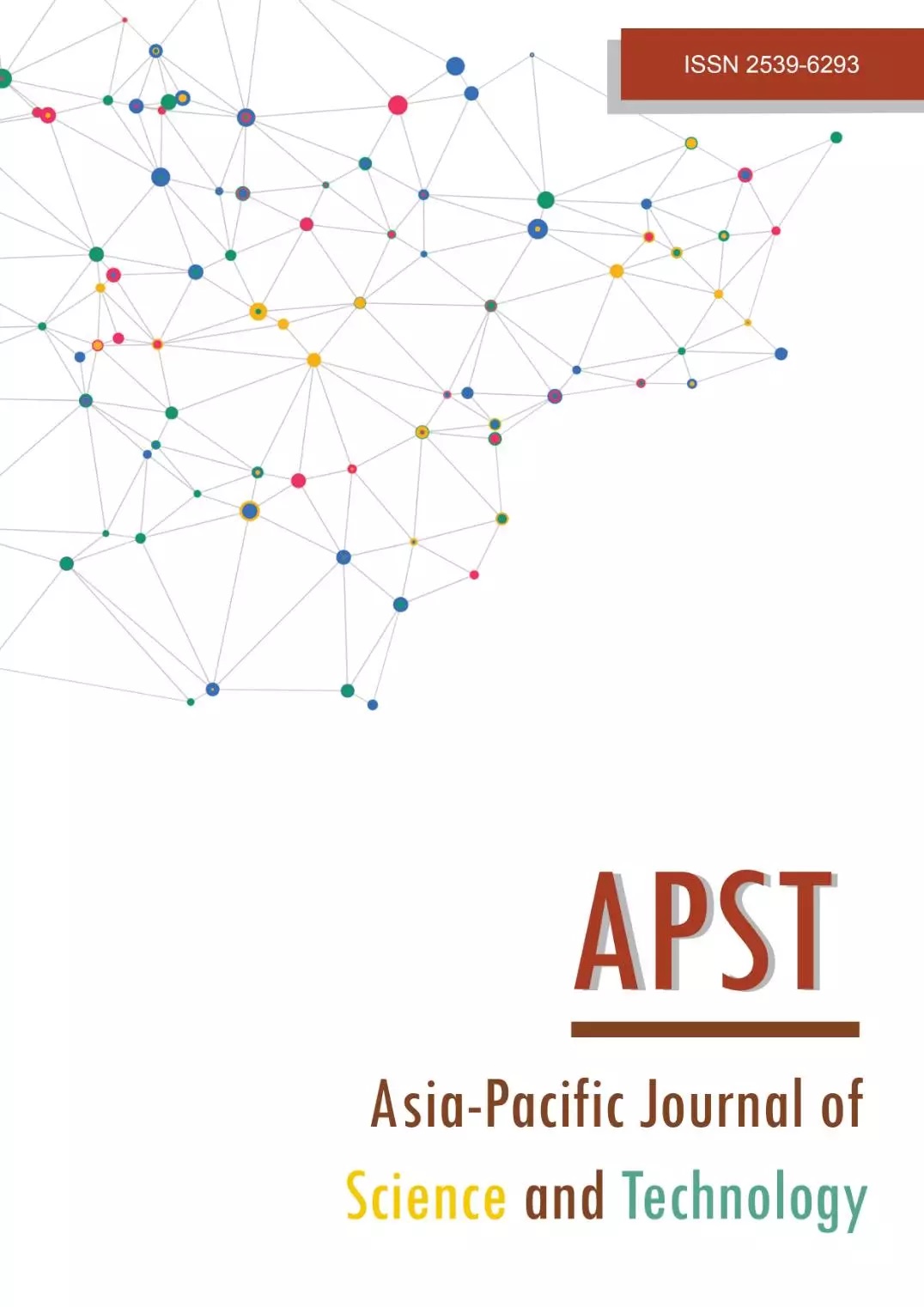Isothermal crystallization of polypropylene/titanium dioxide nanocomposites by flash scanning calorimetry
Main Article Content
Abstract
A wide range of crystallization temperatures of polypropylene (PP) nanocomposites was obtained by using a combination of conventional differential scanning calorimetry (DSC) and flash DSC. This covered the conditions related to polymer processing. The kinetics of crystallization were explained by the Lauritzen-Hoffman equation. The results verify that the equation is still valid even at low temperatures. The decrease in the nucleation parameter ( ) and surface free energy ( ) values in the presence of titanium dioxide (TiO2) proves that TiO2 can be a useful nucleating agent leading to a faster crystallization. The finding gives new insights into crystallization behaviors under low temperature conditions that can be used in the industrial process for the crystallization of PP. It can be concluded that the addition of TiO2 might enable shorter cycle times, resulting in lower processing costs in part manufacturing.
Article Details
References
Chrissafis K, Bikiaris D. Can nanoparticles really enhance thermal stability of polymers? part I: an overview on thermal decomposition of addition polymers. Thermochim Acta. 2011;523(1-2):1-24.
Zhou Z, Wang S, Lu L, Zhang Y, Zhang Y. Isothermal crystallization kinetics of polypropylene with silane functionalized multi-walled carbon nanotubes. J Polym Sci Part B Polym Phys. 2007;45(13):1616-1624.
Chan CM, Wu J, Li JX, Cheung YK. Polypropylene/calcium carbonate nanocomposites. Polymer. 2002;43(10):2981-2992.
Schlarb AK, Suwitaningsih DN, Kopnarski M, Schatteburg NG. Supermolecular morphology of polypropylene filled with nanosized silica. J Appl Polym Sci. 2014;131(1):1-8.
Altan M, Yildirim H. Mechanical and morphology properties of polypropylene and high density polyethylene matrix composites reinforced with surface modified nano sized TiO2 particles. World Acad Sci Eng Technol. 2010;4(10):246-251.
Brucato V, Piccarolo S, Carrubba VL. An experimental methodology to study polymer crystallization under processing conditions. The influence of high cooling rates. Chem Eng Sci. 2002;57(19):4129-4143.
Suksut B. Morphology and morphology formation of injection molded PP-based nanocomposites. Mater Sci. 2016;386:43-44.
Kolesov I, Mileva D, Androsch R, Schick C. Structure formation of polyamide 6 from the glassy state by fast scanning chip calorimetry. Polymer. 2011;52(22):5156-5165.
Androsch R, Lorenzo ML. Kinetics of crystal nucleation of poly (L-lactic acid). Polymer. 2013;54(26):6882-6885.
Schawe JE. Influence of processing conditions on polymer crystallization measured by fast scanning DSC. J Therm Anal Calorim. 2014;116(3):1165-1173.
Mulla AA. Isothermal crystallization kinetics of poly (ethylene terephthalate) and poly (methyl methacrylate) blends. Express Polym Lett. 2007;1(6):334-444.
Avrami M. Kinetics of phase change. I: general theory. J Chem Phys. 1939;7(12):1103-1112.
Lauritzen JI, Hoffman JD. Extension of theory of growth of chain-folded polymer crystals to large undercoolings. J Appl Phys. 1973;44(10):4340-4352.
Zhou WY. Duan B. Wang M. Cheung WL. Isothermal and nonisothermal crystallization kinetics of poly(L-lactide)/carbonated hydroxyapatite nanocomposites microspheres. In: Reddy B, editor. Advances in diverse industrial applications of nanocomposites. 1st ed. Rijeka: InTech;2011. p. 231-260.
Suksut B, Schlarb AK. Influence of TiO2 nanoparticles on nonisothermal crystallization of PP in a wide range of cooling rates analyzed by fast scanning DSC. J Appl Polym Sci. 2016;133(37):1-6.
Hoffman JD, Weeks JJ. Melting process and the equilibrium melting temperature of polychlorotrifluoroethylene. J Res Natl Bur Stand A Phys Chem. 1962;66A(1):13-28.
Xu J, Srinivas S, Marand H, Agarwal P. Equilibrium melting temperature and undercooling dependence of the spherulitic growth rate of isotactic polypropylene. Macromolecules. 1998;31(23):8230-8242.
Huang JW. Dispersion, crystallization kinetics, and parameters of hoffman-lauritzen theory of polypropylene and nanoscale calcium carbonate composite. Polym Eng Sci. 2009;49(9):1855-1864.
Lopez-Manchado MA, Arroyo M. Crystallization kinetics of polypropylene: part 4: effect of unmodified and azide-modified PET and PA short fibres. Polymer. 1999;40(2):487-495.
Griffith JH, Rånby BG. Crystallization kinetics of isotactic polypropylene. J Polym Sci. 1959;38:107-116.
Androsch R, Lorenzo ML, Schick C, Wunderlich B. Mesophases in polyethylene, polypropylene, and poly(1-butene). Polymer. 2010;51(21):4639-4662.
Xing S, Tang P, Yang Y. Poly (styrene-co-maleic anhydride) ionomers as nucleating agent on the crystallization behavior of poly(ethylene terephthalate). J Appl Polym Sci. 2015;132(2):1-12.
Chan TW, Isayev AI. Quiescent polymer crystallization: modelling and measurements. Polym Eng Sci. 1994;34(6):461-471.
Papageorgiou GZ, Achilias DS, Bikiaris DN, Karayannidis GP. Crystallization kinetics and nucleation activity of filler in polypropylene/surface-treated SiO2 nanocomposites. Thermochim Acta. 2005;427
(1-2):117-128.
Mucha M, Królikowski Z. Application of DSC to study crystallization kinetics of polypropylene containing fillers. J Therm Anal Calorim. 2003;74(2):549-557.
Makhlouf A, Satha H, Frihi D, Gherib S, Seguela R. Optimization of the crystallinity of polypropylene/submicronic-talc composites: the role of filler ratio and cooling rate. Express Polym Lett. 2016;10(3):237-247.


